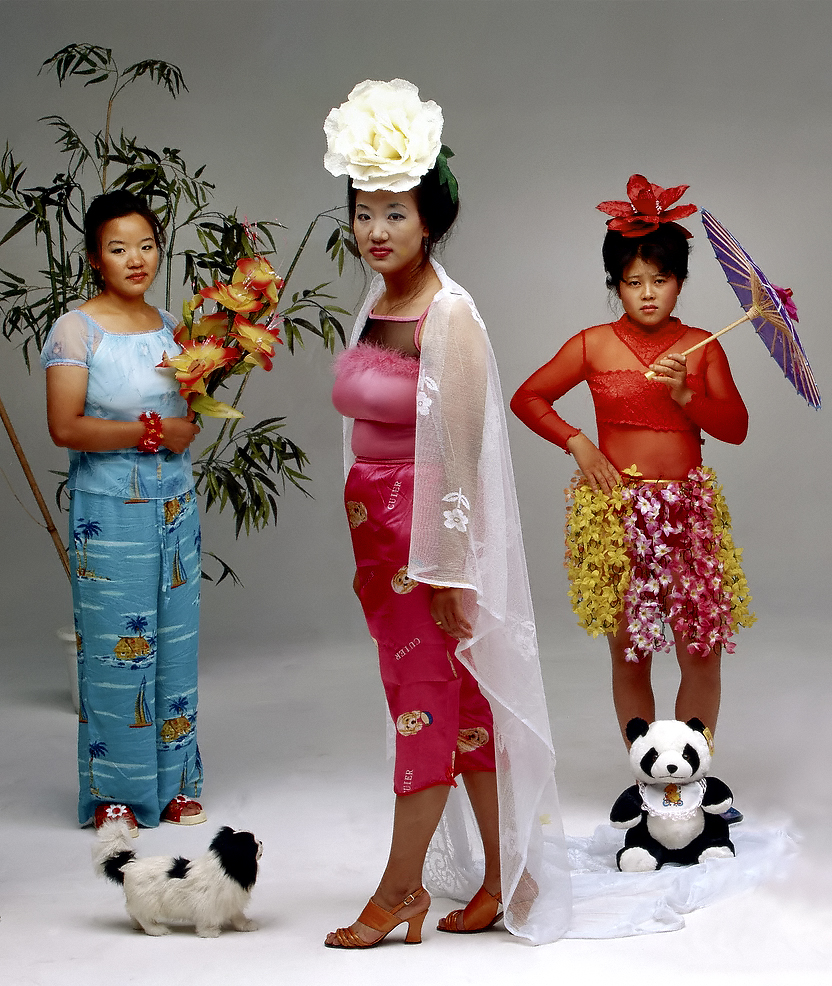Concurrent Felice Beato and modern Chinese photo exhibits at the Getty highlight China’s transformation

“New Women,” by Qingsong Wang, appears at the Getty’s exhibition “Photography from the New China.” The exhibition will be on display through April 24.
Credit: J. PAUL GETTY MUSEUM
By Daniel Boden
Jan. 3, 2011 1:46 a.m.
Pictures of war casualties in the 1800s hang next to modern nude portraits from China. The ethnographic image of the native shares space with the artistic rendering of the contemporary Far East. In short, the old and the new come together to form two centuries of art and social history from Asia.
Recent acquisitions by the Getty Museum are on display in two concurrent exhibitions at the Getty Center until April 24. “Felice Beato: A Photographer on the Eastern Road” shows works from deceased photographer and ethnographer Felice Beato, as he traveled through Asia in the 19th century. “Photography from the New China” features pieces from eight Chinese artists whose creative exploits have flourished since the cultural and economic opening of China in the early 1990s. The two exhibits share a gallery space, amplifying the contrast between colonial and contemporary Asia.
“Felice Beato has come to be recognized as one of the major photographers of the 19th century, but until this exhibition there’s been no proper overview of his work,” said David Bomford, acting director of the Getty Museum.
The Getty acquired more than 800 images from Beato’s artistic career, which spans nearly 50 years, from the mid-19th century to the early 20th century. The exhibit’s curator, Anne Lacoste, had to hone the large collection down to 123 images. Choosing a fraction of Beato’s work was not an easy task.
“Even though Beato was very prolific during his own career, the challenge was to find images that will show his talent as a war photographer that were very significant in his career,” Lacoste said.
Beato, a British national of Italian birth, began his storied career in India. Eventually, he stayed in the region to continue his work, even taking up residence in Japan for 20 years and opening a curio shop in Burma.
According to Lacoste, Beato was revolutionary for his time. He was unafraid to show death in war, capturing corpses and bones strewn about conquered forts on film. There was little or no death in photos before Beato.
“If you’re looking at the work of Beato’s contemporaries, you will notice that they try to announce the exoticism. It’s more about a connection with the western world than trying to create beautiful images of a different world,” Lacoste said. “When you’re looking at the work of Beato, it’s much more documentary. It’s like the people are here, even though they’re posing. … It’s more about transcribing his own experience.”
Although the Beato exhibition is respectful to its subjects and effectively translates the photographer’s experience onto film, it only provides a 19th century view of East Asia, Bomford said.
The New China exhibit creates the contrast to Beato’s work. It features work from established Chinese artists in their 40s. Most pieces on display, however, date back to the 1990s when these artists were just emerging.
Judith Keller, the senior curator for the Getty Museum’s photography department, said that all featured artists are well known in China’s experimental art scene, but few are recognized internationally. The Getty exhibit provides them with greater international exposure.
“You know that you’re looking at contemporary work when you see these pictures in the show, but you also know right away that it’s not likely to be work from the U.S. It has an Eastern aura because there are elements that are from Eastern traditions,” Keller said.
The New China artists play with imperial art forms as a way to pay homage to their country’s heritage, Keller said. The resurrection of traditions of Chinese art responds to socialist realism, the only art allowed during the Cultural Revolution.
“Photography from the New China” sharply contrasts Beato’s pre-revolution China because there is a chronological gap between the two.
The gap remains unexplained because there are no examples of Chinese art from the first 90 years of the 20th century on display at the Getty.
“I liked the idea that the New China show would be an abrupt kind of transition from (Beato),” Keller said. “They’re worlds apart, but at the same time it’s the history of what has happened photographically in China over the last 200 years.”

